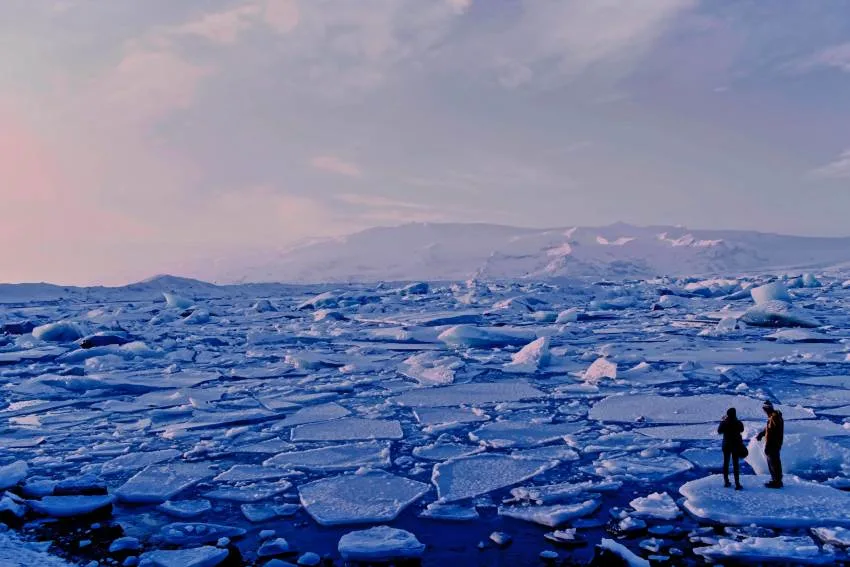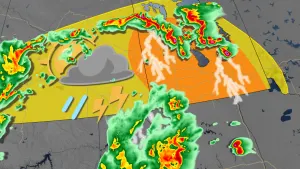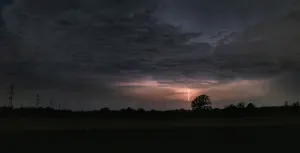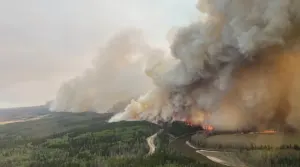
Why ‘tipping points’ are important when we talk about climate change
Arctic ice melt is one of climate change main concerns at the U.N. COP25 conference in Spain.
During the U.N. Climate Change Conference COP25 held in Madrid, Spain, U.N. Secretary General Antonio Guterres emphasized that the world’s efforts to stop climate change have been “utterly inadequate” so far and there is the danger that global warming could pass the “point of no return.”
This year marks the end of a decade where we have seen exceptional heat observations, the retreat of ice and unprecedented global sea levels. These changes and many others that are linked to Earth’s climate have been exacerbated by human-released greenhouse gas emissions.
Almost certainly, the average temperatures of the recent five-year period (2015-2019) and the past decade (2010-2019) will be the highest in recorded history. According to the World Meteorological Organization (WMO), the climate trends indicate that 2019 will be the second or third warmest year on record.
With a more energetic planet, scientists are using the term “tipping point” or “point of no return” more frequently when referring to certain climate phenomena. A tipping point is when a threshold is exceeded and leads to cascading changes within the climate system that, in theory, would be impossible to stop and is a scenario that is irreversible.
For instance, warming oceans are expected to keep melting Arctic ice, which is highly reflective of sunlight. Melting ice exposes oceans that are less reflective than ice and absorb more heat from the Sun, which causes more ice to melt. This relationship is expected to continue melting ice across the world and scientists are warning that several tipping points are dangerously close.

Credit: NSIDC
What happens in the Arctic does not always stay in the Arctic, and it can affect millions outside of the region. Biodiversity changes can have a tremendous social and economic impact around the world. The physical changes on the other hand, can greatly influence the global climate and sea level rise.
The past two decades have been dramatic for the Arctic because average surface-air temperatures have increased at more than double the rate of the global average. This has led to a reduction of summer surface albedo (ice and snow solar reflectivity), an increase in atmospheric water vapour content, changes in total cloud cover during the summer, additional heat and moisture transport into the region, and a lower loss of heat into space from the Arctic compared to the subtropics.

Credit: NSIDC
All the ongoing changes have an influence on mid-latitude weather and can affect hundreds of millions of people across the planet. Atmospheric scientists are working on further understanding the highly complex relationship between melting ice in the Arctic and global climate anomalies. Overall, scientists are confident that changes in the stratospheric polar vortex are not separable from natural climate variability, making it harder to link them directly to ice melt.
Greenland is a commonly cited example of how climate change is impacting ice melt in the Arctic since the island’s ice sheet is melting six times faster today than it did in the 1980s. These rates keep surprising scientists, as they climb well above what the predicted scenarios looked like just a few years back. Since 1972, Greenland ice melt has contributed around 1.3 centimetres of sea level rise. The rate of melt continues to escalate and if all remaining ice were to melt, sea levels could rise up to 7 meters.

Credit: NSIDC
The scientists that are meeting this week at the COP25 have detailed their concerns about the impacts that continued ice melt in the Arctic will have on mid-latitude weather. The Arctic will look very different by the end of the century, and it is very likely that much of the ice build-up we see today on a seasonal basis will not occur. Researchers also point out the need to better understand the evolution of polar glaciers and ice sheets in general, and how these influence global sea level and ocean currents.
Many scientists over the past few decades have published alarming findings of global ice melt and the potential impact on Earth. To effectively prevent the catastrophic changes, the 195 nations defending the Paris Climate accords will have to work harder than ever to reduce global greenhouse emissions.











